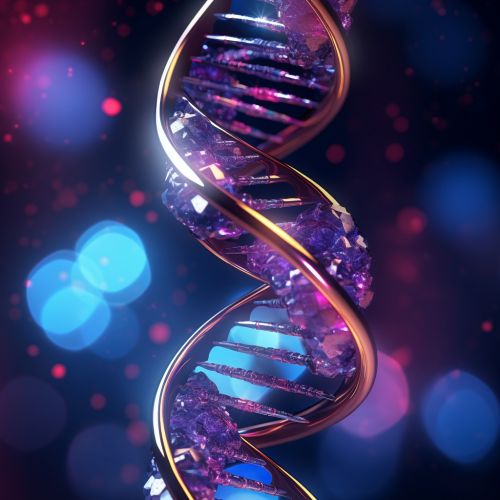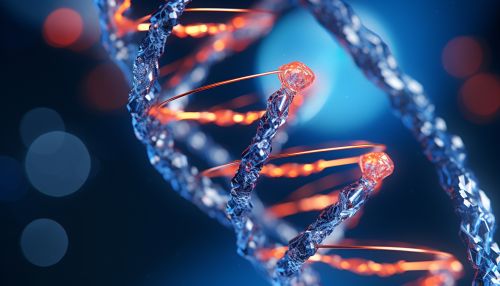DNA
Introduction
DNA, or Deoxyribonucleic Acid, is a molecule that carries most of the genetic instructions used in the development, functioning, and reproduction of all known living organisms and many viruses. DNA molecules consist of two biopolymer strands coiled around each other to form a double helix.
Structure
The structure of DNA is dynamic along its length, being capable of coiling into tight loops and other shapes. In all species it is composed of two helical chains, bound to each other by hydrogen bonds. Both chains are coiled around the same axis, and have the same pitch of 34 angstroms (Å).
Nucleotides
DNA is composed of nucleotides, which are the building blocks of DNA. These nucleotides are composed of a nitrogenous base, a five-carbon sugar (deoxyribose), and at least one phosphate group. The nucleotides are joined to one another in a chain by covalent bonds between the sugar of one nucleotide and the phosphate of the next, resulting in an alternating sugar-phosphate backbone.
Base Pairing
The nitrogenous bases of the two separate polynucleotide strands are bound together, according to base pairing rules (A with T and C with G), with hydrogen bonds to make double-stranded DNA.
Function
DNA serves as the life-long memory system. It is the main source of genetic information. Genetic information is encoded as a sequence of nucleotides (guanine, adenine, thymine, and cytosine) recorded using the four-letter alphabet (G, A, T, and C). The stored information is used inside the cell, providing the organisms' cells with a blueprint for making the proteins necessary for life.
Replication
DNA is used in the process of DNA replication. Each strand of the original DNA molecule serves as a template for the production of its counterpart, a process referred to as semiconservative replication.
Transcription
DNA is transcribed to make RNA, and RNA is then translated to make proteins. This process is known as the central dogma of molecular biology.
Genetic Code
The genetic code is the set of rules by which information encoded in genetic material (DNA or RNA sequences) is translated into proteins (amino acid sequences) by living cells.
DNA Sequencing
DNA sequencing is the process of determining the precise order of nucleotides within a DNA molecule. It includes any method or technology that is used to determine the order of the four bases: adenine, guanine, cytosine, and thymine.
See Also


